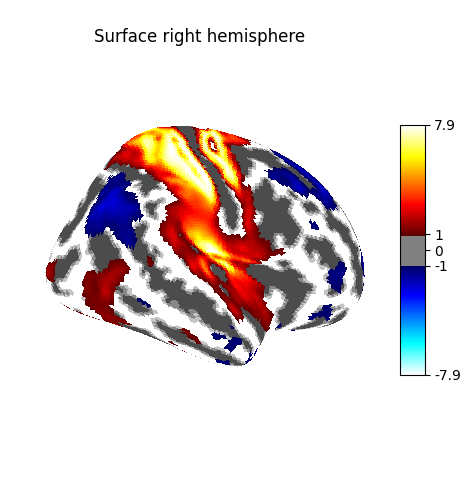Nilearn¶
Nilearn enables approachable and versatile analyses of brain volumes and surfaces. It provides statistical and machine-learning tools, with instructive documentation & open community.
It supports general linear model (GLM) based analysis and leverages the scikit-learn Python toolbox for multivariate statistics with applications such as predictive modeling, classification, decoding, or connectivity analysis.
Get started with Nilearn
Discover functionalities by reading examples
Learn about neuroimaging analysis
Featured examples¶

Glass brain plotting
Explore how to retrieve data and plot whole brain cuts in glass mode.

Computing a connectome with sparse inverse covariance
Construct a functional connectome using the sparse inverse covariance, and display the corresponding graph and matrix.

Making a surface plot of a 3D statistical map
Project a 3D statistical map onto a cortical mesh and display the surface map as png or in interactive mode.

Introduction tutorial to fMRI decoding
Learn to perform decoding with nilearn. Reproduce the Haxby 2001 study on a face vs cat discrimination task in a mask of the ventral stream.

Voxel-Based Morphometry on Oasis dataset
Study the relationship between aging and gray matter density using data from the OASIS project.

Clustering methods to learn a brain parcellation from fMRI
Use spatially-constrained Ward-clustering, KMeans, Hierarchical KMeans and Recursive Neighbor Agglomeration (ReNA) to create a set of parcels, and display them.

Deriving spatial maps from group fMRI data using ICA and Dictionary Learning
Derive spatial maps or networks from group fMRI data using two popular decomposition methods, ICA and Dictionary learning on data of children and young adults watching movies.

Decoding with FREM: face vs house object recognition
Use fast ensembling of regularized models (FREM) to decode a face vs house discrimination task from Haxby 2001 study.

Searchlight analysis of face vs house recognition
Fit a classifier a large amount of times in order to distinguish between face- and house-related cortical areas.
Nilearn is part of the NiPy ecosystem.